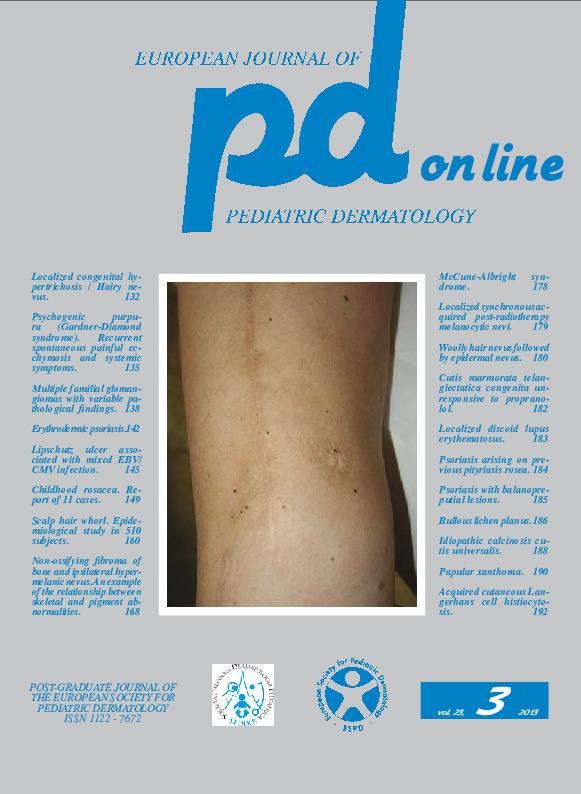Woolly hair nevus followed by epidermal nevus.
Downloads
How to Cite
Garofalo L., Bonifazi E. 2013. Woolly hair nevus followed by epidermal nevus. Eur. J. Pediat. Dermatol. 23 (3):180-81.
pp. 180-181
Abstract
A little girl of 10 months was first observed for the presence of an area of curly hair different from other hair, present since birth. The physical examination revealed in the posterior parietal region an area of about 10 cm in diameter provided with curly hair, lighter and thinner than the surrounding hair, which were smooth (Fig. 1 ); the skin below the curly hair looked normal as far as you can see at inspection and palpation: even the skin of the face, neck, trunk and upper limbs was normal. The girl underwent neurology, ophthalmology, cardiology and orthopedics consultations, which did not show any alterations. We diagnosed woolly hair nevus, explained its significance to the family and suggested a periodic control. We saw again the patient at the age of 13 years and her parents told us that the nevus of the scalp did not substantially change but that skin alterations of the face, cervical region, back and upper right became progressively more obvious; no other diseases worthy of note were reported. The physical examination highlighted on the face (Fig. 3) linear lesions distributed along the lines of Blaschko consisting of darker skin, slightly raised and sprinkled with comedo-like micropapules. Similar lesions (Fig. 2) were visible in the right cervical region and right back; the right upper limb was also involved, especially level with the hand. On the index finger of the latter, at the proximal interphalangeal joint an infiltrated plaque of about 1 cm in diameter (Fig. 2 ) was present. On the scalp the area with curly, lighter and thinner hair had remained essentially unchanged. However, the underlying skin was darker in color (Fig. 4), but apparently not infiltrated. The final diagnosis was epidermal nevus associated with woolly hair nevus.Keywords
Woolly hair nevus, epidermal nevus

